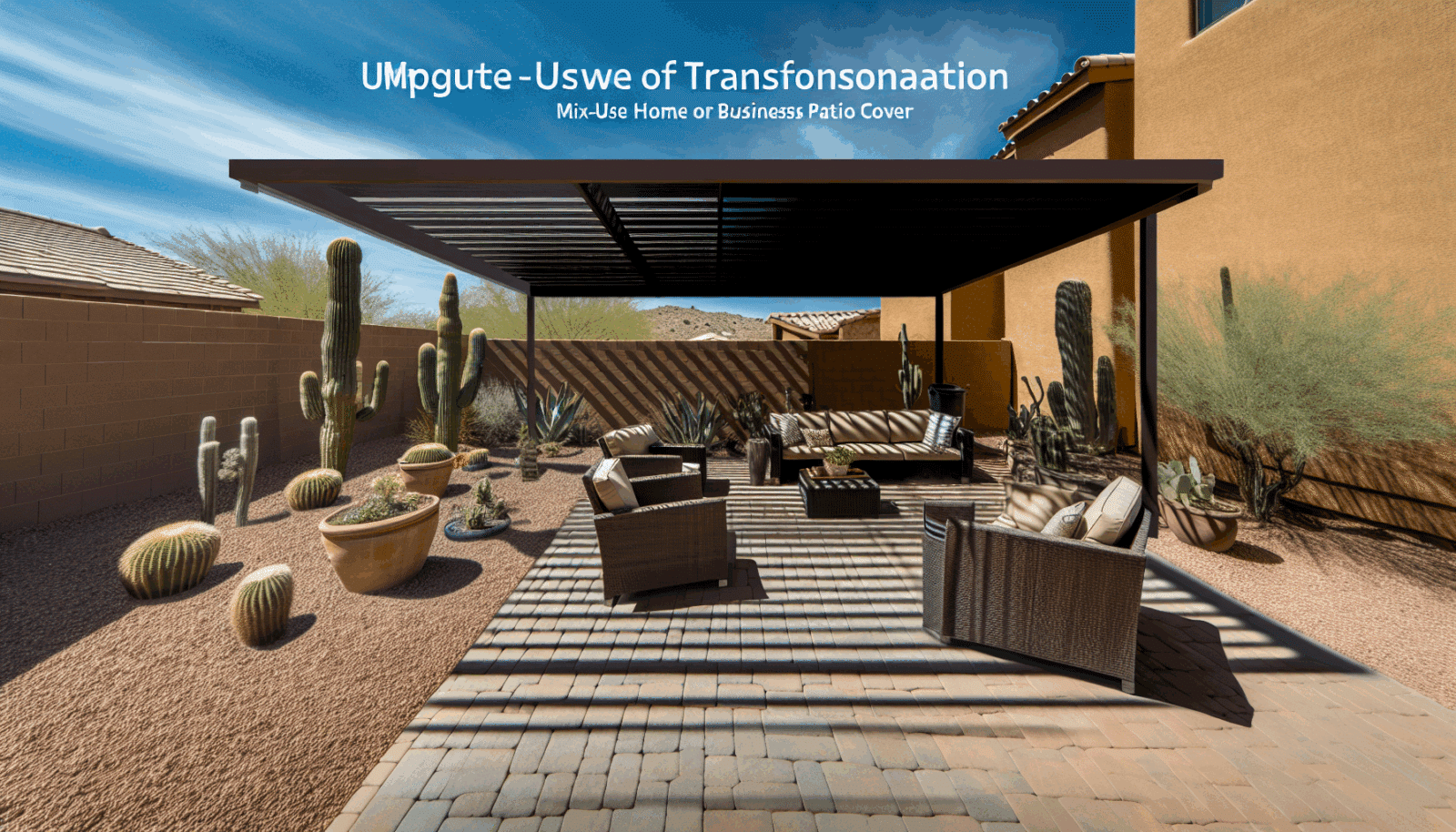Transform Your Outdoor Living Space with the Right Patio Cover
Summer in Maricopa County can feel like someone cranked the sun up to eleven. You love your backyard — the kids’ laughter, the BBQ smoke, the desert sunsets — but staying outside often means sweating through your plans. The right patio cover doesn’t just shield you from sun and monsoon rain; it reshapes how you live at home. Seriously, a good cover can turn a dusty patch of concrete into an extra living room, dining room, or nap zone. You know what? It’s worth thinking about.
Why a Patio Cover Actually Matters (More Than You Think)
Most homeowners imagine a patio cover as a simple slab of shade. That’s partly true—but it’s also a way to protect outdoor furniture, reduce indoor cooling costs, and extend the life of wood decks and doors. Shade matters. Shade matters because it changes temperature, light, and how you use space: afternoon naps, evening hangouts, Sunday brunches. And while shade can sound like a downer—less sun, less vitamin D—good design keeps the mood bright while losing the heat.
Choices, Choices: Which Type Fits Your Home?
There are lots of options. Each one has trade-offs—some are low maintenance, some look handcrafted, some let you dial in light and airflow. Here’s a quick tour so you don’t get overwhelmed.
Aluminum Patio Covers — Practical and Low-Maintenance
Aluminum covers are popular around Maricopa County because they resist rust, last a long time, and keep things cooler. They come with built-in gutters, painted finishes, and often hidden fasteners for a modern look. If you want something that works and disappears into the background, this is it.
Louvered Roofs — Control the Sun (Yes, Really)
Motorized louvered roofs let you tilt slats to control sunlight and airflow. Want morning sun and afternoon shade? No problem. They cost more, but the flexibility is worth it if you’re picky about light.
Wood Pergolas — Warmth and Character
Wood feels timeless; cedar or redwood ages well if sealed. Pergolas aren’t full roofs unless you add a cover; they filter light, create patterns, and hold plants or string lights beautifully. They require maintenance though—painting or staining every few years keeps them looking sharp.
Fabric Awnings and Shade Sails — Affordable and Stylish
These are great for rental properties or budgets that watch every dollar. They provide instant shade, come in fun Colors, and are surprisingly durable when made from UV-resistant fabric. Just know: they don’t offer the same wind resistance as rigid roofs during monsoons.
How to Choose the Right Cover Without Losing Your Mind
Here’s the thing—you can get bogged down by choices. So focus on a few practical questions first:
- How do you use the space? (Dining, lounging, cooking?)
- What’s your budget for upfront cost and upkeep?
- Does your HOA have rules about heights or Materials?
- Do you need permits in Maricopa County? (Often yes.)
Answer those, and the rest becomes easier. If you’re the “I want it to look nice and be nearly maintenance-free” type, aluminum or a powder-coated louvered roof frequently wins the day. If you want charm and don’t mind a little work, choose wood. Simple as that—mostly.
Design Details That Make People Stop and Say “Wow”
Details turn a roof into a room. Consider adding recessed lighting, a ceiling fan, or integrated speakers. Gutters and downspouts keep runoff from pooling around your foundation (boring, but important). A dripline or flyscreen can make evenings mosquito-free. And yes—outdoor-rated furniture and rugs make the space feel intentional, not like a garage sale that spilled outside.
Think about sightlines too. A half wall or short column can frame a view of the mountains or hide the AC unit. Small changes—lighting at different heights, layered textures—do wonders.
Seasonal Realities: Heat, Monsoons, and Everything In Between
Maricopa County is extreme: brutal sun, occasional heavy rains, and gusty monsoon winds. That shapes choices. UV-resistant materials reduce fading and heat soak. Solid roofs give the best storm protection; fabric or pergolas with vines do fine until a derecho decides to visit. Plan for drainage and wind loads—engineers and local codes aren’t being picky to make life hard, they’re keeping your investment safe.
Installation, Timeline, and What to Expect
Installing a patio cover is rarely a one-day thing. Expect design, permitting, and a few days for construction—sometimes longer if there are inspections. You’ll deal with concrete footings, posts, and flashing around your house. Professional installers bring tools like torque wrenches, powder-actuated nailers, and scaffolding (yes, those are real words you’ll hear). If you want to be involved, ask for a site walk-through and a simple schedule. Communication matters—call, text, email. Good crews keep you in the loop.
You’re Almost There — A Few Last Thoughts
Choosing a patio cover is part technical, part aesthetic, and part emotional. You’ll argue about the color with your spouse. You’ll worry about the permit. But then you’ll sit under that first evening sky, drink in hand, and think: why didn’t we do this sooner? Mild contradiction: adding a cover feels like adding work, yet it often reduces work (fewer sun-damaged cushions, lower AC bills). Funny how that happens.
Ready to Make It Happen?
If you’re in Maricopa County and curious about options, we can walk you through Styles, costs, and what fits your home. Arizona Pergola Company knows local codes, heat-related material choices, and which installs handle monsoons best. Let’s figure out the right cover for your life—no pressure, just sensible advice.
Call us at 480-568-5870 or Request a Free Quote.




